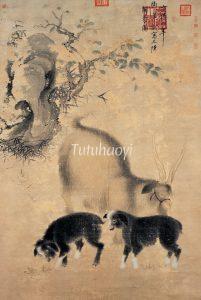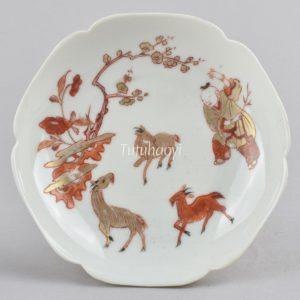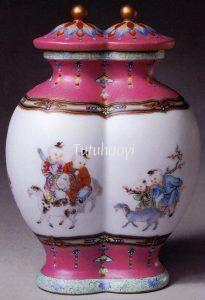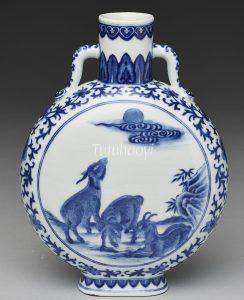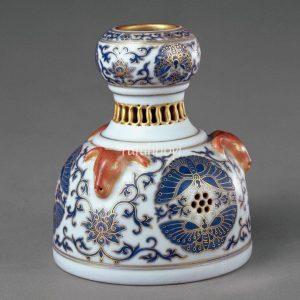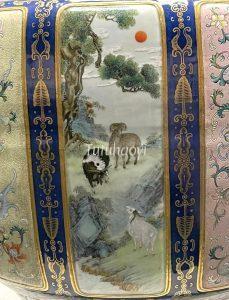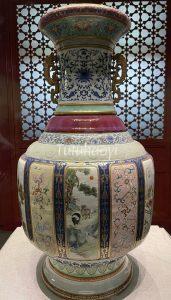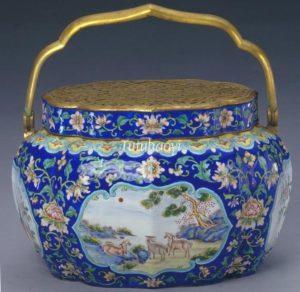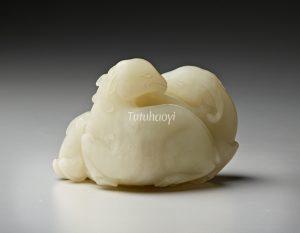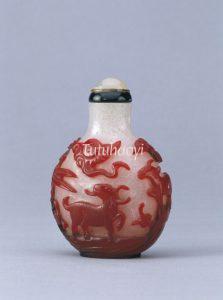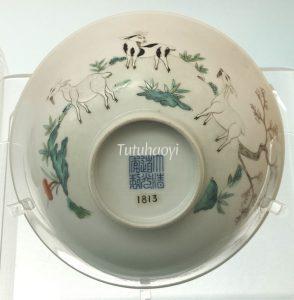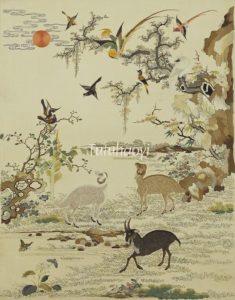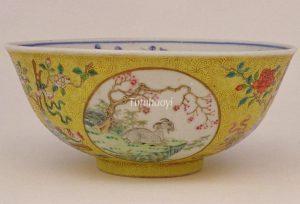The return of the Yang force after the long winter will bring us prosperity
三阳开泰
© Tutuhaoyi.com owns the copyright of the description content for the images attached. Quoting all or part of the description content on this page is permitted ONLY IF ‘Tutuhaoyi.com’ is clearly acknowledged anywhere your quote is produced unless stated otherwise. (本页描述内容版权归Tutuhaoyi.com所有,转发或引用需注明 “Tutuhaoyi.com”, 侵权必究, 已注开源信息的条目除外。)
Pun Design :
Three + Goat
Punning Details:
– In an ancient Chinese literature, The Book of Change (I-Ching 易经) that can be traced back to Western Zhou (1046–771 BCE), there are sixty-four different hexagrams (gua 卦) with symbols consisting of long and short lines. For example, the hexagram of ‘Tai’ 泰卦 is ䷊, consisting of a trigram of ☷ (坤 kun) on the top and a trigram of ☰ (乾 qian) on the bottom. The top ☷ three pairs of short yin lines stand for the earth and being receptive and acquiescent. The lower ☰ three long yang 阳 lines stand for the sun, heaven, strength, and power. The hexagram of ‘Tai’ ䷊ is in the transition of having more long yang lines than short yin lines, marking the end of winter and the beginning of spring.
– ‘yang 羊’ for ‘goat’, ‘sheep’ or ‘lamb’, makes a pun on ‘yang 阳’ for ‘the sun, or the masculine force in the universe’;
– The motif combination of three goats (三羊 san yang) makes a pun on ‘san yang 三阳’, the three long yang lines in the Tai hexagram ䷊, expressing an auspicious wish in the new year that after the long winter the beginning of masculine force will flourish the universe.
Fig 1: San Yang Kai Tai Tu (三阳开泰图), hanging scroll, ink and colour on paper, Zhu Zhanji (朱瞻基 1399–1435), 1429, courtesy of the National Palace Museum, Taipei
Fig 2-3: porcelain cup with underglaze blue decoration, Jiajing period (1522–66), Ming dynasty, courtesy of the National Palace Museum, Taipei
Fig 4: porcelain tea bowl and saucer with gilt and overglaze enamelled decoration, Yongzheng period (1723–35), Qing dynasty, courtesy of Galerie Nicolas Fournery, Paris
Fig 5: famille rose porcelain vase, Qianlong period (1736–95), Qing dynasty, courtesy of the Palace Museum, Beijing
Fig 6: porcelain moon flask with underglaze blue decoration, Qianlong period (1736–95), Qing dynasty, courtesy of the National Palace Museum, Taipei
Fig 7: gilded porcelain incense burner with underglaze blue and overglaze copper-red decoration, Qianlong period (1736–95), Qing dynasty, courtesy of the Palace Museum, Beijing
Fig 8-9: polychrome-gilded porcelain vase, Qianlong period (1736–95), Qing dynasty, courtesy of the Palace Museum, Beijing, photography by Ales Yeo
Fig 10: bronze incense burner with enamelled decoration, Qianlong period (1736–95), Qing dynasty, courtesy of the Palace Museum, Beijing
Fig 11-12: jade carving, 18th century, courtesy of Cantor Arts Center, Stanford University
Fig 13: glass snuff bottle, 18th-19th century, courtesy of the Palace Museum, Beijing
Fig 14: famille rose porcelain bowl, Daoguang period (1821–1850), Qing dynasty, courtesy of Shanghai Museum, China
Fig 15: Canton-style embroidery hanging screen, Guangxu period (1875–1908), Qing dynasty, courtesy of the Palace Museum, Beijing
Fig 16: famille rose porcelain bowl, Guangxu period (1875–1908), Qing dynasty, courtesy of the Palace Museum, Beijing
